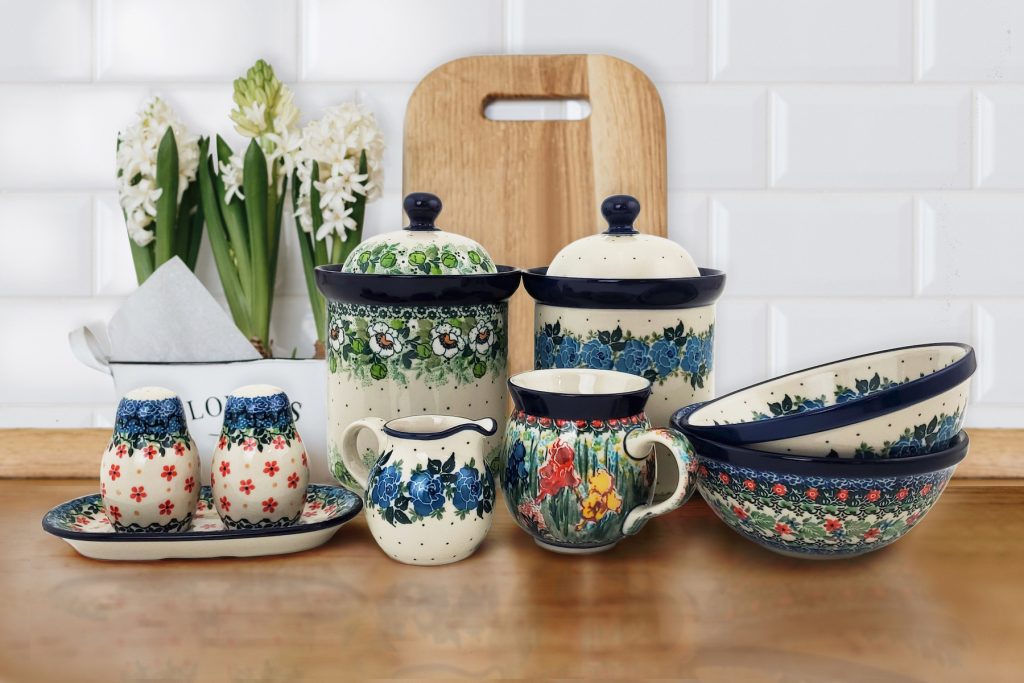Polish pottery has gained a reputation for its exquisite craftsmanship, vibrant designs, and exceptional quality. Many enthusiasts and collectors sometimes wonder: Why is Polish pottery so expensive compared to other ceramics? Here, we’ll look into why Polish pottery commands a premium price and shed light on why it’s an investment worth making.

Handcrafted Excellence
Unlike mass-produced ceramics, Polish pottery is meticulously crafted by skilled artisans. Each piece undergoes a labor-intensive process that involves hand shaping, hand painting, and hand glazing. The artisans employ traditional techniques that have been refined over generations, resulting in unparalleled craftsmanship and attention to detail. As a result, the time and skill invested in creating these pieces contribute to their elevated price.
Superior Materials
Polish pottery is made from high-quality stoneware clay, sourced from the Silesian region in Bolesławiec, Poland. This unique clay, combined with the firing process at high temperatures, results in a stoneware that ensures exceptional durability, resistance to chipping and cracking, and longevity. The use of the finest European lead-free glazes adds to the safety and overall value of the pottery. These high-standard superior materials come at a higher cost, reflected in the final sale price.
Extensive Artistic Process
The intricate patterns and designs that adorn Polish pottery require significant artistic expertise and effort. Each piece is hand-painted using specialized brushes and fine detailing tools. The motifs often draw inspiration from Polish culture, folklore, and nature, resulting in visually captivating and culturally rich designs. The extensive artistic process involved in creating and repeating these patterns by hand contributes to the increased value of Polish pottery.
Limited Production and Rarity
Polish pottery is not mass-produced on an industrial scale. Many renowned manufacturers employ a limited number of skilled artisans who hand-paint or stamp each piece. Therefore, this limited production creates collections with exclusivity and rarity, as certain patterns and designs may become harder to find over time. Because of this, collectors are willing to pay a premium for these rare and sought-after pieces, contributing to the higher prices observed in the market.
Historical Significance and Collectibility
Polish pottery has a rich historical legacy that spans centuries, resulting in finely honed expertise, the creation of many traditional patterns, and unique and limited-run pieces. Collectors, trusting that Polish pottery is made to such a high-quality standard, are able to focus their attention on finding unique shapes and hard-to-find patterns that speak to them or carry personal or cultural significance. As with any collectible item, the rarity, uniqueness, and historical value of Polish pottery can appreciate over time, further justifying the higher price point.
So, the next time you come across a Polish pottery plate, mug, or bowl with a higher cost than mass-market dishware, remember you’re investing in a tangible piece of history, craftsmanship, and artistic brilliance. Polish pottery is not merely a functional ceramic; it’s a work of art that encapsulates tradition, craftsmanship, and cultural heritage. Embrace the beauty, allure, and value that Polish pottery offers, knowing that the price you pay is a testament to the skilled hands and rich cultural heritage that make it truly extraordinary.
